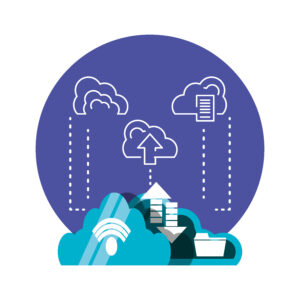As an Australian business professional, lets understand the importance of leveraging data to drive insights and guide strategic decisions. With the proliferation of business intelligence platforms like Tableau and Microsoft Power BI, companies now have access to powerful data visualization capabilities. These tools empower businesses to transform complex data sets into interactive visuals and actionable insights. By harnessing data visualization, quickly identify trends and patterns within key performance indicators. This allows for data-driven decision-making to gain a competitive edge. Be it retail, finance, healthcare, or another sector, business intelligence visualization unlocks the full potential of data. Equipped with these sophisticated analytics, learn how to prime and propel a business forward in a fast-paced market.
The Growing Importance of Data Visualization for Business Intelligence in Australia
Identifying Patterns and Insights
- Data visualization tools like Tableau and Power BI allow businesses to explore their data visually, identifying patterns, trends, and insights that would otherwise remain hidden. Interactive dashboards make it easy to filter, sort, and analyze data from multiple perspectives. This ability to gain a “big picture” understanding of business performance and customer behavior is crucial for gaining a competitive advantage.
Streamlining Decision Making
- With data presented visually, important metrics and KPIs can be monitored at a glance. Decision-makers can spot areas that require intervention and drill down into the details. This streamlines the decision-making process, allowing businesses to pivot quickly based on the latest data. For companies operating in fast-paced markets where conditions are constantly changing, data-driven agility is essential.
Simplifying Complex Datasets
- Many organizations collect huge volumes of data from multiple sources. Making sense of complex, unstructured datasets can be challenging without the right tools. Data visualization simplifies this process through interactive dashboards that provide a clear, coherent overview of key metrics, events, and attributes. This high-level perspective informs more focused analysis and reporting.
Driving Cultural Change
- A data-driven culture depends on the ability to share insights across teams and roles. Using data visualization, insights can be presented in a format that is intuitive and accessible to all stakeholders. This transparency and democratization of data promotes a shared understanding that cultivates a culture where data is embedded into organizational processes and decision-making at all levels. For Australian companies, data visualization is the key to unlocking the full potential of their data.
Top Data Visualisation Tools Used by Australian Companies
Tableau
- Tableau is one of the most popular business intelligence and data visualization tools used by companies in Australia. It allows you to connect to data from spreadsheets, databases, and cloud services to create interactive dashboards and reports. Tableau’s drag-and-drop interface makes it easy to explore data and uncover insights without needing to code. Many Australian businesses leverage Tableau to monitor key performance indicators, identify growth opportunities, and make data-driven decisions.
Microsoft Power BI
- Microsoft Power BI is a suite of business analytics tools that provides interactive visualizations and reports. It connects to hundreds of data sources and uses natural language queries to explore data. Power BI offers data transformation, streaming analytics, and artificial intelligence capabilities to uncover trends and patterns. The tool is widely used by Australian organizations to create sales reports, analyze customer data, and gain a competitive advantage through data-driven insights.
Qlik Sense
- Qlik Sense is an end-to-end data integration and visualization platform used by many companies in Australia. It allows you to combine data from multiple sources and create interactive dashboards, graphs, and reports to explore relationships and gain insights. Qlik Sense uses an associative data indexing engine and offers self-service analytics capabilities so anyone in your organization can make data-driven decisions. Australian businesses across sectors leverage Qlik Sense to optimize operations, reduce costs, and improve the customer experience.
With powerful yet user-friendly tools like Tableau, Power BI, and Qlik Sense, Australian companies are well-positioned to gain valuable insights from their data and drive business intelligence. These tools transform data into a strategic asset that fuels innovation and growth.
Key Benefits of Data Visualisation for Business Decision-Making

1. Improved Data Comprehension
Data visualization tools like Tableau and Power BI enable you to transform raw data into interactive charts, graphs, and dashboards that are easy to understand. Visual representations of data are far more intuitive than spreadsheets full of numbers and statistics. When data is presented visually, insights and patterns emerge that may have otherwise remained hidden. Executives and managers can grasp key metrics, performance indicators, and trends at a glance.
2. Identify Patterns and Correlations
Interactive data visualizations allow you to spot connections between data points that lead to valuable insights. You can see how factors like pricing, marketing campaigns, and seasonality affect sales. Identifying these patterns and correlations helps in planning and forecasting. For example, an FMCG company may determine that sales of a particular product spike during the summer months and use this insight to optimize its inventory and supply chain.
3. Data-Driven Decision Making
Data visualization empowers organizations to make decisions based on facts and evidence rather than intuition or guesswork. With data-driven insights at their fingertips, managers and executives can determine the best course of action with confidence. They can see how strategies and initiatives have impacted key performance indicators in the past and use this information to guide future decisions. Data-driven decision-making leads to improved outcomes, reduced risk, and a competitive edge.
4. Enhanced Collaboration
Interactive dashboards and reports enable people across an organization to explore the same data, gain a shared understanding of metrics and KPIs, and work together more effectively. Team members can filter, highlight, and annotate visualizations to share insights with colleagues. This kind of collaborative analysis leads to innovative solutions and strategies that may not emerge in isolation. With data visualization, you can bring key stakeholders together around a single source of truth.
In summary, data visualization offers significant benefits for business decision-making in an increasingly data-driven world. By transforming raw data into interactive visual insights, organizations gain a deeper understanding of their business and market, identify new opportunities, mitigate risks, and make strategic decisions with confidence. For executives and managers, data visualization is a critical tool for navigating complexity and gaining a competitive edge.
Industry Use Cases of Data Visualisation in Australia
I. Retail
- Data visualization is invaluable for retail companies to gain insights into customer behavior and optimize operations. Interactive dashboards allow retailers to track key performance indicators like sales, customer retention, and inventory turnover rates. Analyzing customer data helps identify buying patterns and predict future demand for products. Visualizing this data geographically can help retailers determine ideal locations for new stores based on customer demographics and buying habits. For example, Woolworths, a leading Australian supermarket chain, uses data visualization to optimize product placement, pricing, and promotions across its network of over 3,000 stores.
II. Finance
- In the finance sector, data visualization is essential for risk management and compliance. Banks and insurance companies rely on advanced analytics and visualization to detect fraud, comply with regulations, and mitigate risk. Real-time dashboards provide a consolidated view of key metrics across large datasets, allowing analysts to spot anomalies quickly. For instance, Westpac, one of Australia’s largest banks, uses data visualization to monitor transactions, detect money laundering, and ensure compliance with “know your customer” regulations.
III. Healthcare
- Healthcare organizations leverage data visualization to improve patient outcomes, reduce costs, and enhance operational efficiency. Interactive dashboards give healthcare professionals a holistic view of patient data, treatments, and health trends. This helps identify high-risk patients, optimize resource allocation, and make data-driven decisions. For example, St. Vincent’s Hospital in Sydney uses data visualization to reduce patient readmission rates, decrease emergency room wait times, and improve clinical workflows.
In summary, data visualization has become indispensable for businesses in Australia seeking to gain data-driven insights. Advanced tools like Tableau and Power BI help transform complex data into intuitive, interactive dashboards and reports. When leveraged strategically, data visualization can drive innovation, reduce costs, optimize operations, and ultimately provide a competitive advantage.
Best Practises for Implementing Business Intelligence Data Visualisation
Selecting the Right Tool
- When implementing a business intelligence data visualization tool, it is critical to first determine your organization’s needs and choose a solution that meets those needs. The two most popular tools currently are Tableau and Microsoft Power BI, both offering robust data visualization capabilities. However, they differ in areas such as ease of use, pre-built dashboards, and integrations. It is important to assess how technically proficient your users are and whether pre-built solutions would be beneficial. You should also consider any systems you need to integrate with to enable a single source of truth for your data.
Data Preparation
- To maximize the value gained from data visualization, you must first ensure your data is clean, consistent, and integrated. This involves activities such as removing duplicates, standardizing values and dimensions, and consolidating data from different sources. Data preparation can require a significant time investment but is necessary for accurate insights and decision-making. Some visualization tools offer data preparation features to streamline this process.
Designing Effective Dashboards
- A well-designed dashboard presents data in a simple yet engaging way. It should focus on key metrics, use minimal text, and employ visually appealing styling. Bar charts, line graphs, pie charts, and heat maps are some of the most common and useful types of data visualizations for dashboards. Interactive elements allow users to drill down into the data for more details. Your dashboard should be tailored to your audience and regularly reviewed to ensure it continues to meet stakeholder needs.
Continuous Monitoring
- Simply implementing data visualization tools and building dashboards is not enough to gain real value. It is critical to continuously monitor key metrics and insights to identify trends, respond to changing conditions, and make informed decisions. Schedule regular reviews of dashboards and reports, and encourage stakeholders to access them frequently. Some tools offer alerting functions to immediately notify you of important events or when a metric reaches a critical threshold. Continuous monitoring, along with action based on insights, is key to data-driven management.
In summary, successful implementation of business intelligence data visualization involves selecting the right tool, thoroughly preparing your data, designing effective dashboards, and continuous monitoring of key metrics and insights. By following these best practices, Australian organizations can harness the power of their data to gain a competitive advantage.
Key takeaways
As shown, data visualization tools are enabling Australian businesses to gain actionable insights from complex data. By leveraging solutions from Tableau, Microsoft Power BI, and more, companies can present information visually to see patterns and make data-driven decisions. This ability to understand data quickly is crucial for businesses across industries to stay competitive. Going forward, expect to see even more innovative uses of interactive data visualization as companies aim to maximize the value of their data assets. With the right tools and strategy, businesses can leverage data visualization for a competitive edge.
More Stories
Fintech Alliance PH Welcomes Paynamics to Strengthen Digital Payments Ecosystem
In the Philippines' financial technology sector, Fintech Alliance PH announces a pivotal collaboration with Paynamics Technologies Inc. This partnership signals...
AI Max: Google’s Next Leap in Predictive Search Advertising
AI Max revolutionizes the way advertisers connect with users by harnessing sophisticated algorithms to predict search intent with unprecedented accuracy.
Blinq Secures $25M Series A to Revolutionize Digital Networking
Blinq secured $25 million in Series A funding led by Touring Capital, with support from Blackbird Ventures and HubSpot Ventures.
VoLTE Unleashed: GSMA and Samsung Elevate Global Voice Connectivity
GSMA and Samsung Electronics collaboration enhances global voice connectivity through significant technological improvements. Specifically, Samsung devices running Android 15 and later will have Voice over LTE (VoLTE) enabled by default.
Quantum Synergy: MicroAlgo’s Hybrid Algorithm Pioneers Efficient Multi-Query Optimization
MicroAlgo Inc. stands at the forefront with its innovative hybrid algorithm designed to revolutionize Multi-Query Optimization (MQO). By harmonizing the strengths of classical and quantum computing, this breakthrough addresses the intricate challenges of simultaneously processing multiple queries, an essential function in fields such as database management and machine learning.
Denodo 9.2: Revolutionizing Data Marketplaces with GenAI and Self-Service Innovation
In the fast-changing data management landscape, Denodo Platform 9.2 stands out as a major innovation. It sets new standards for...


